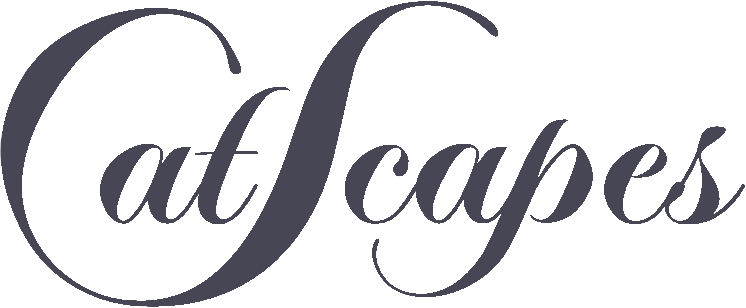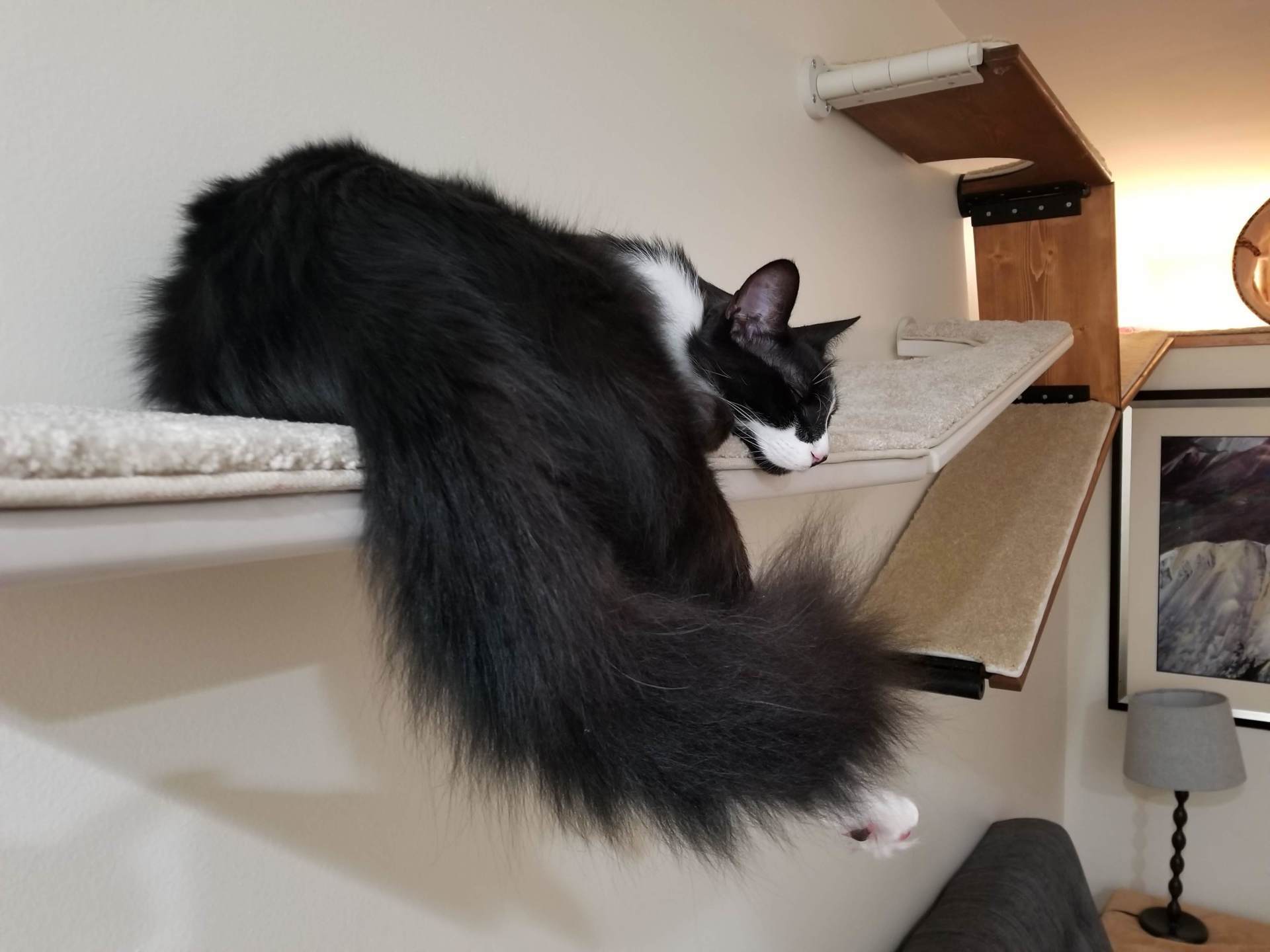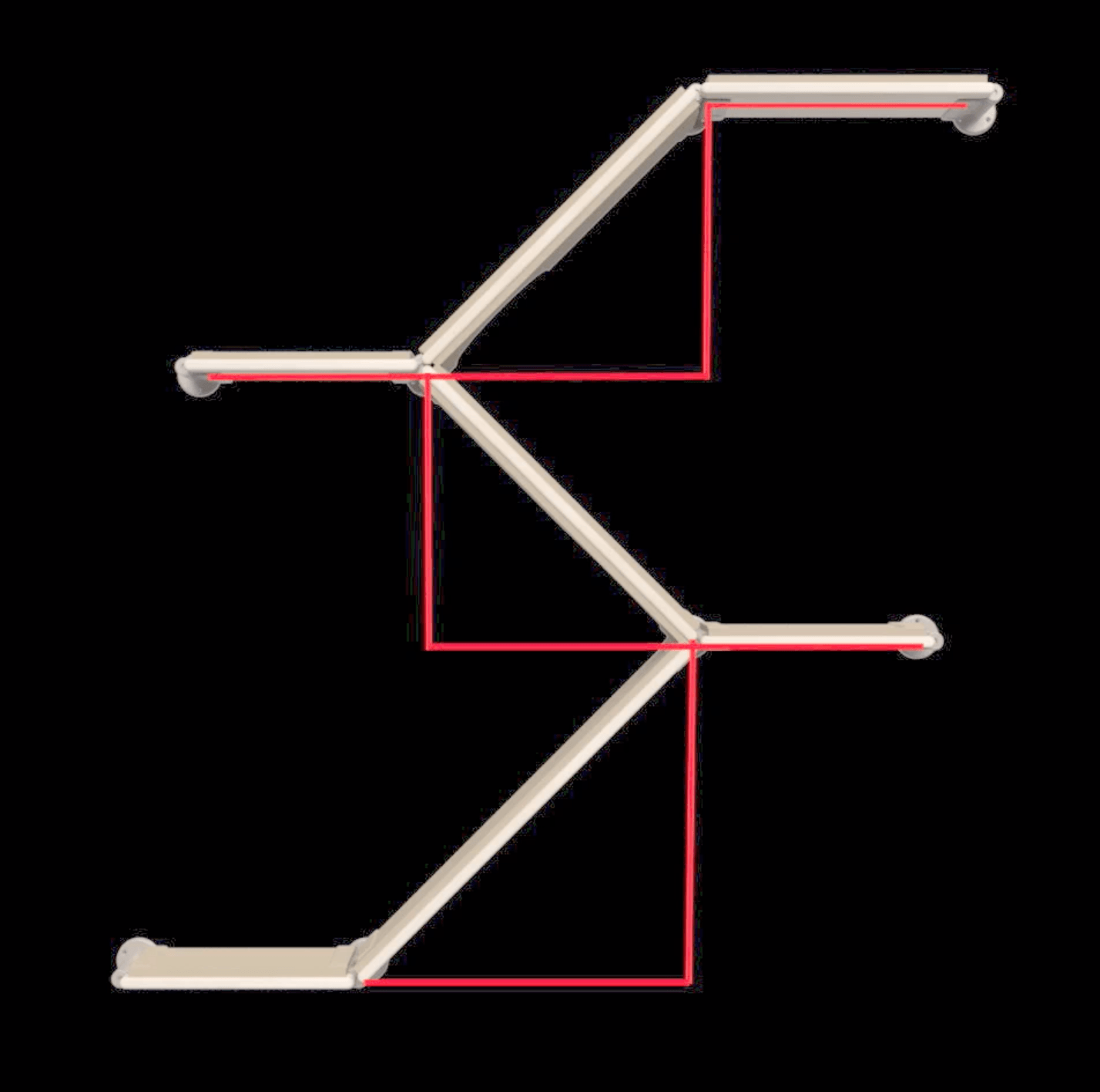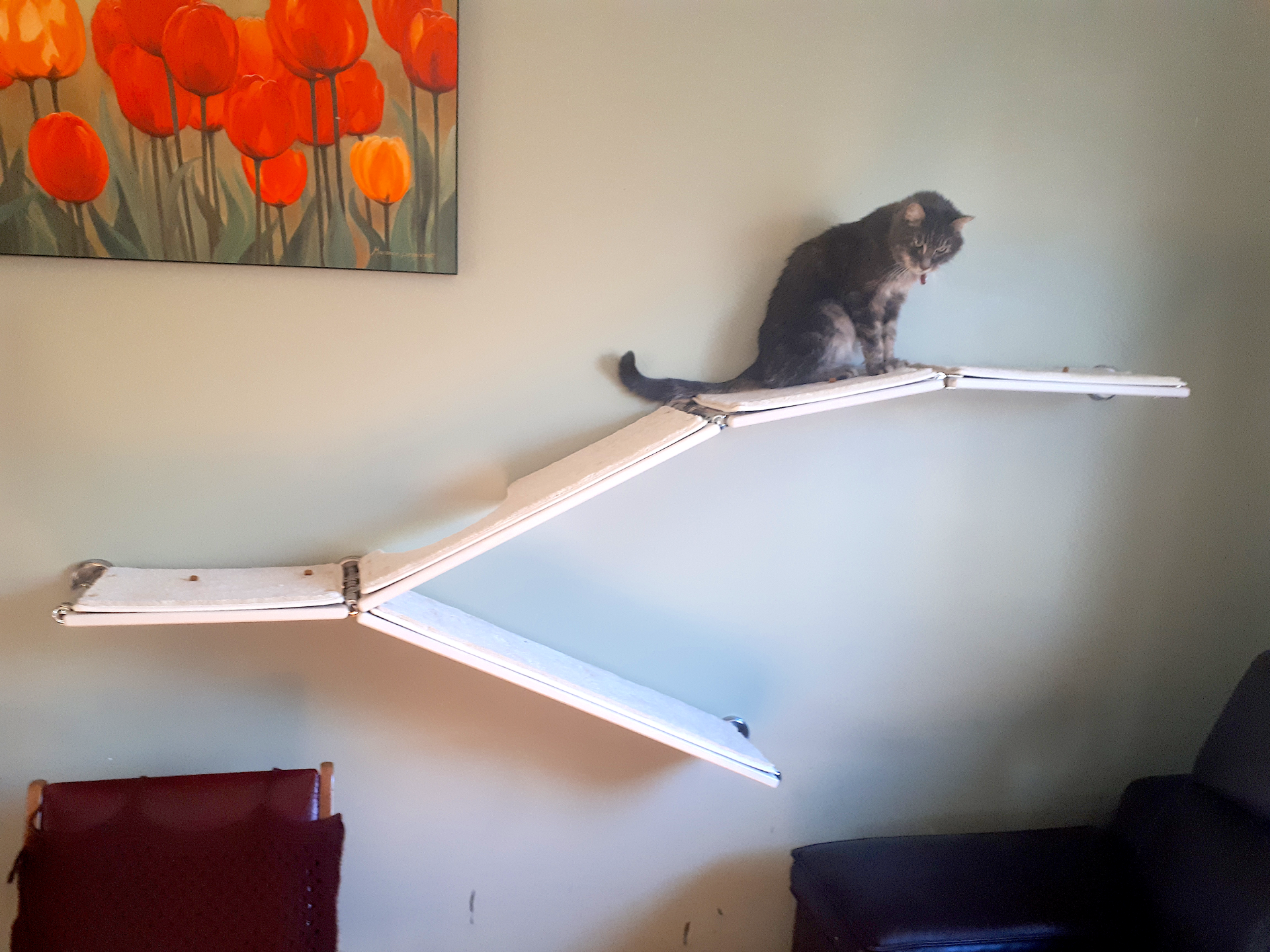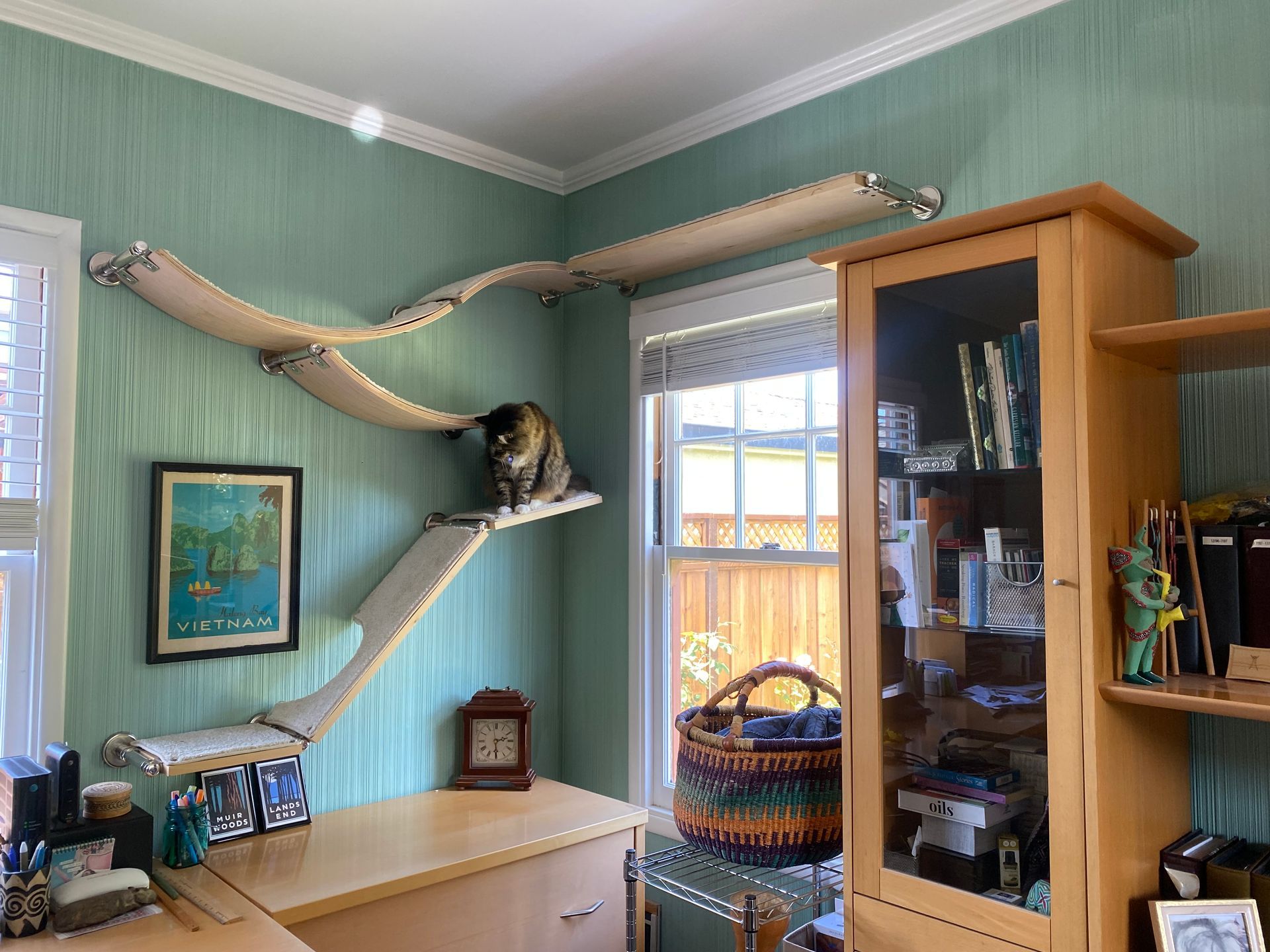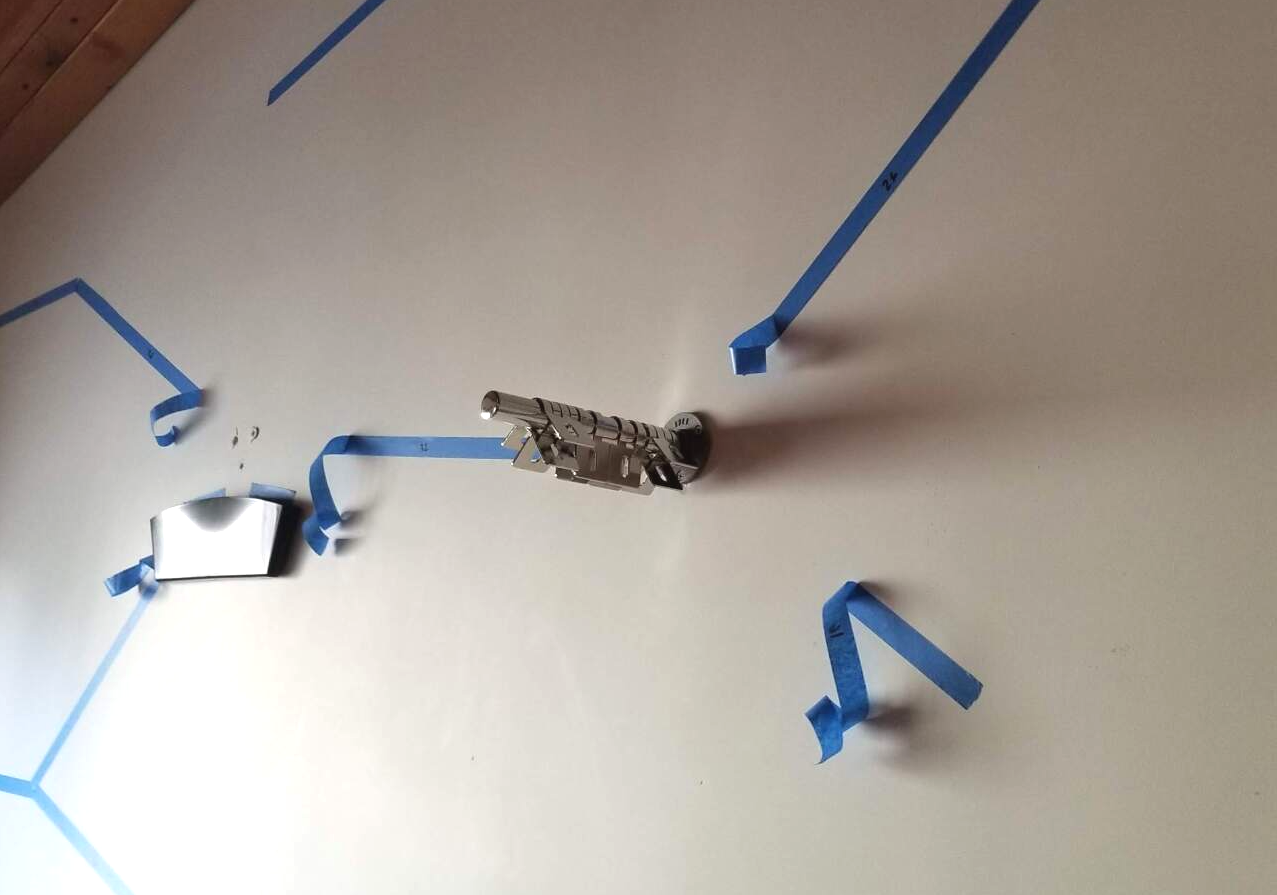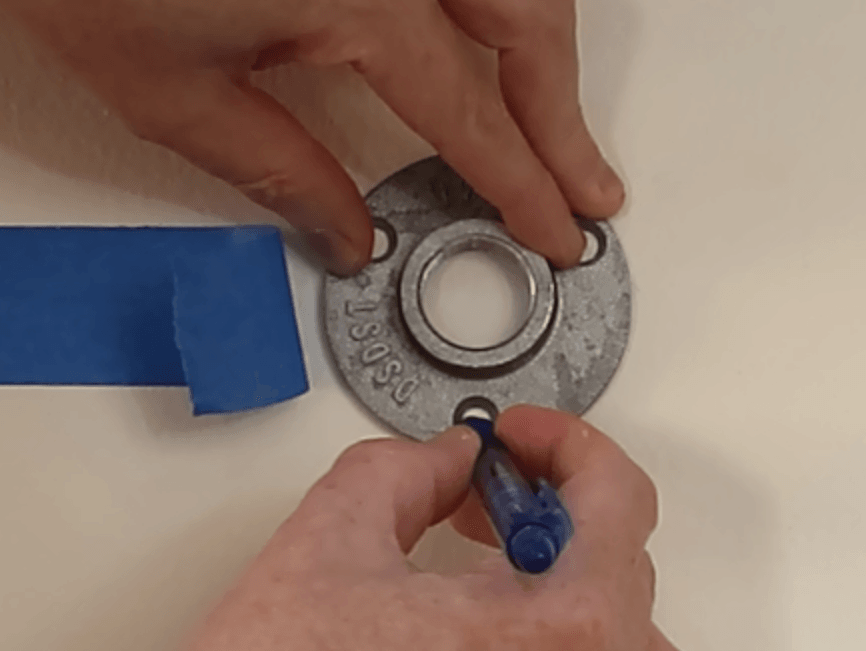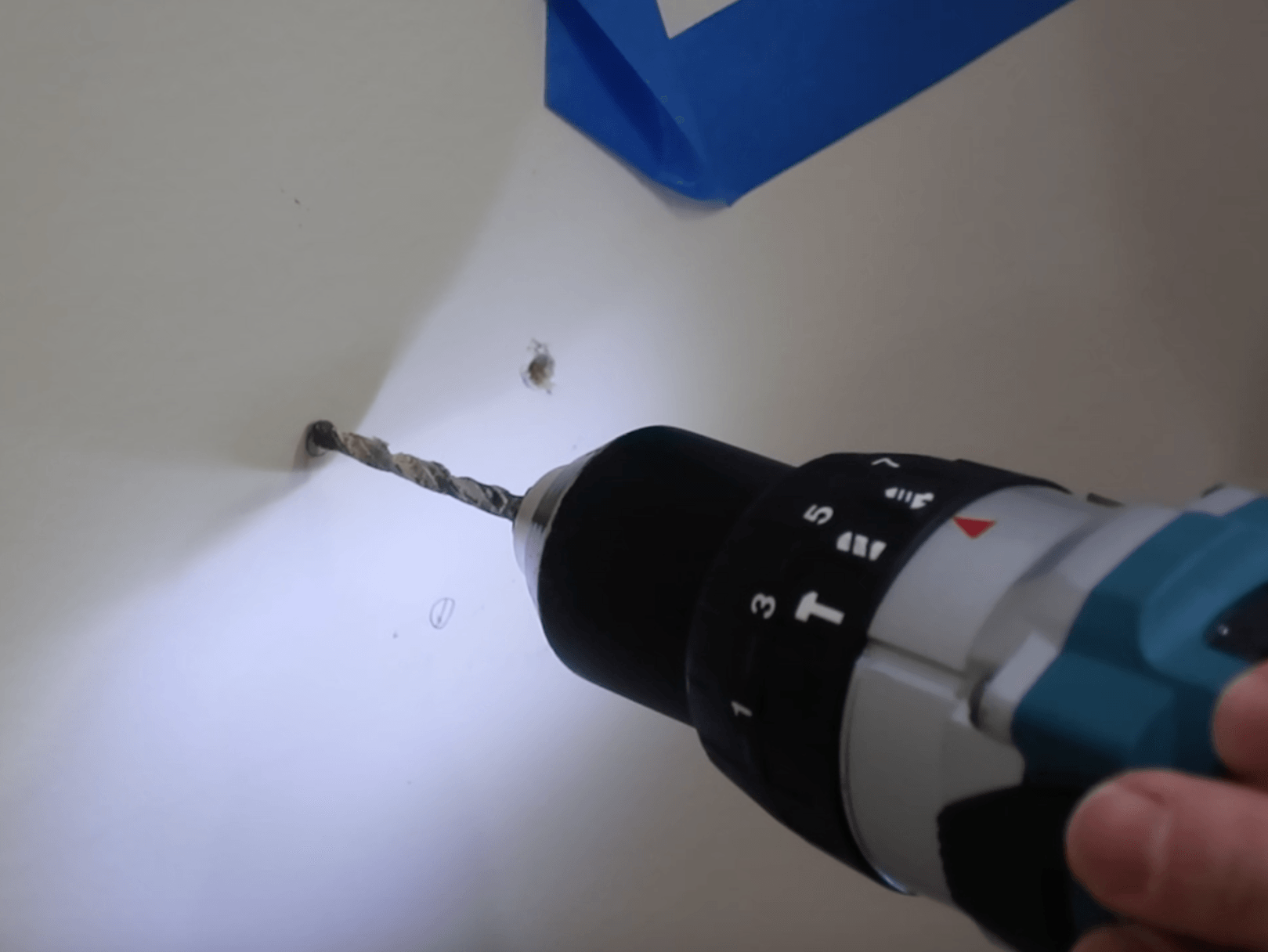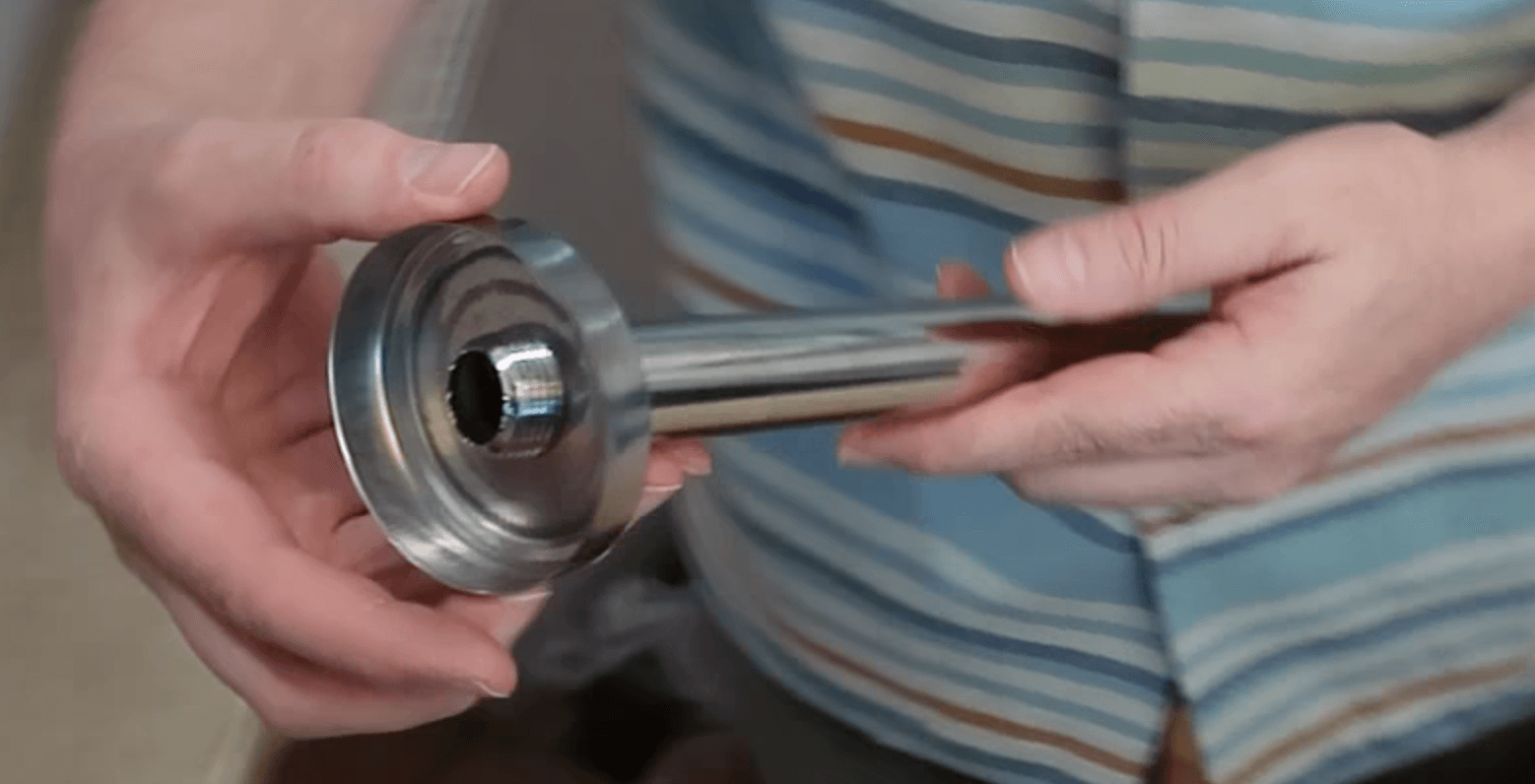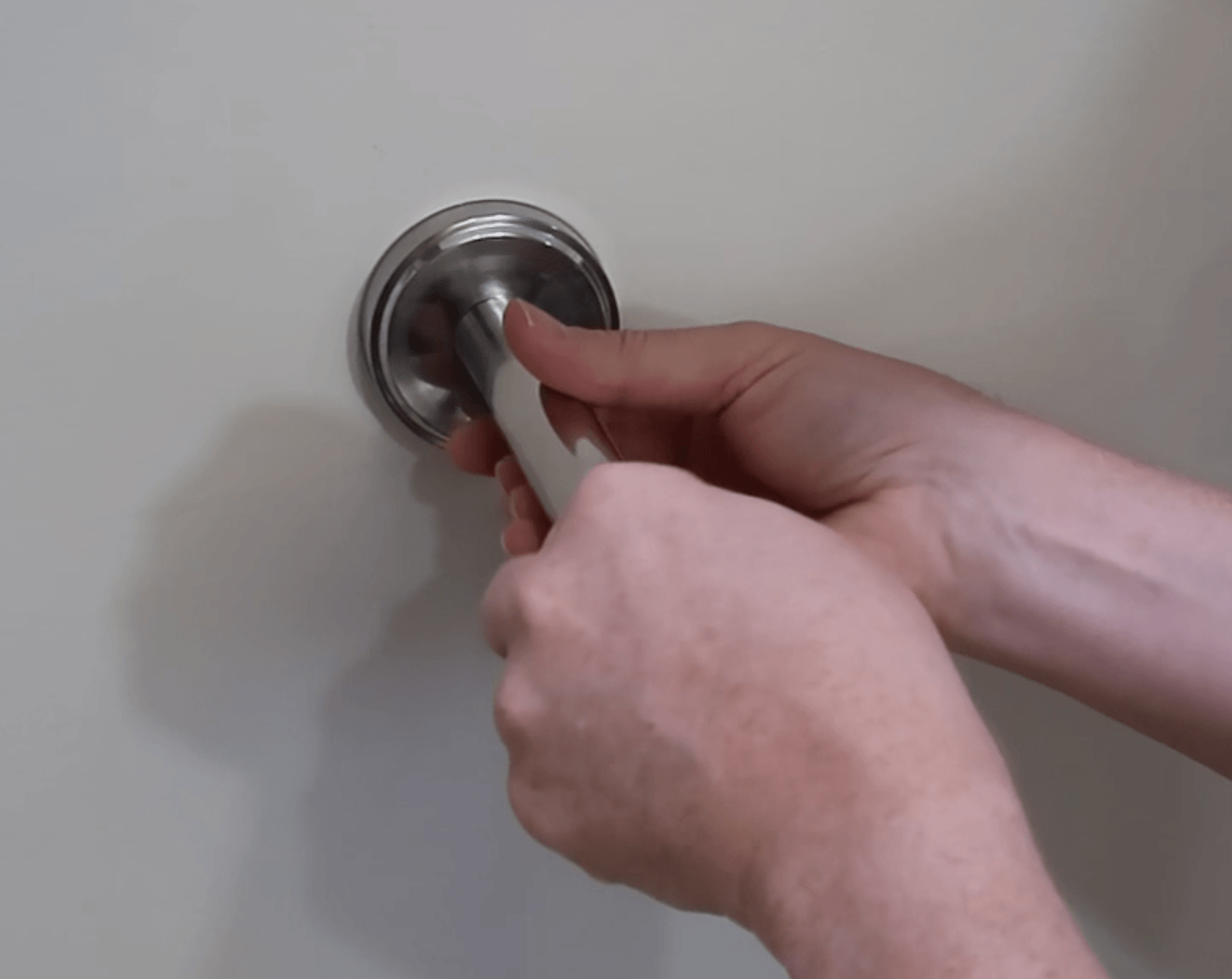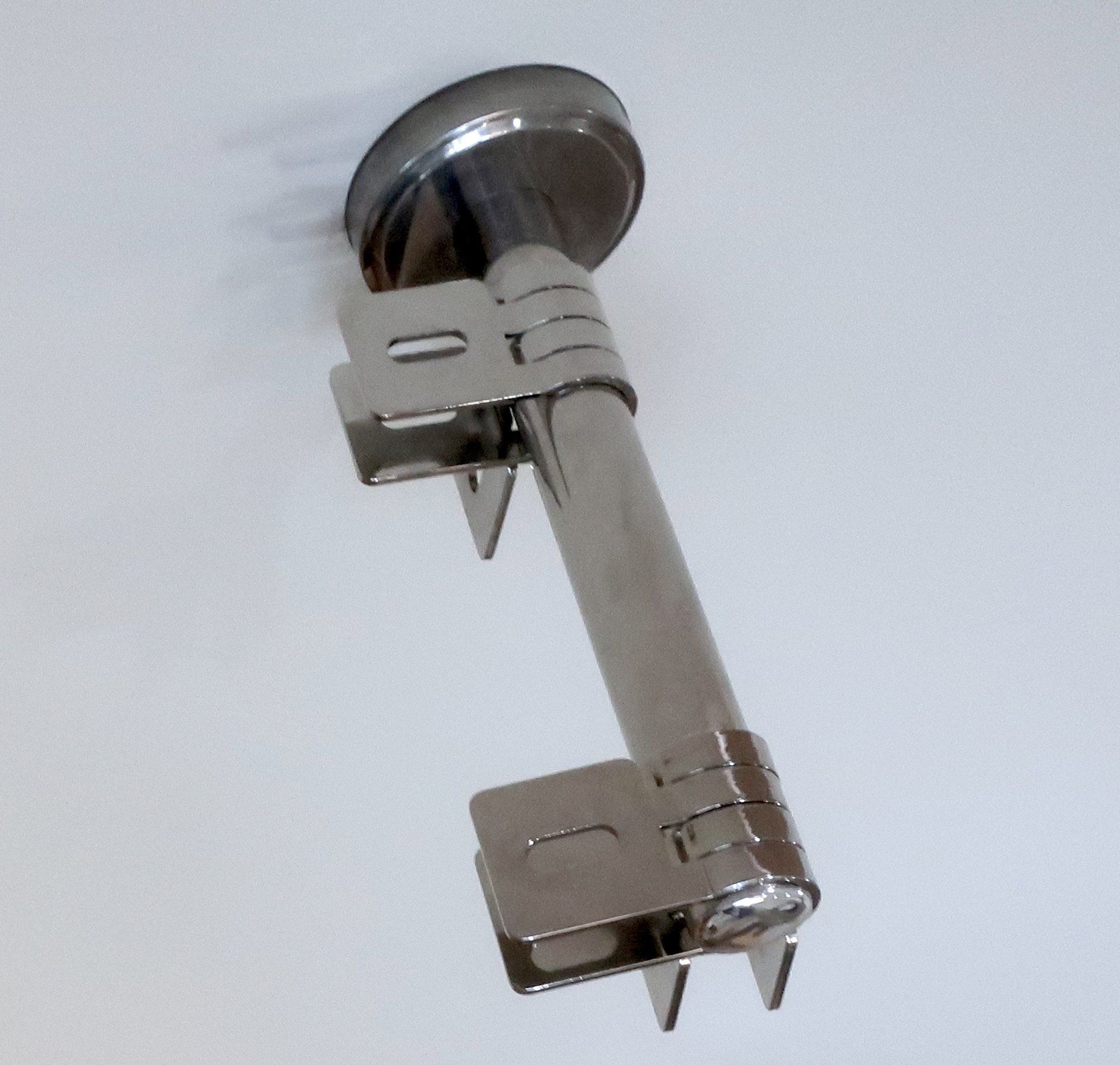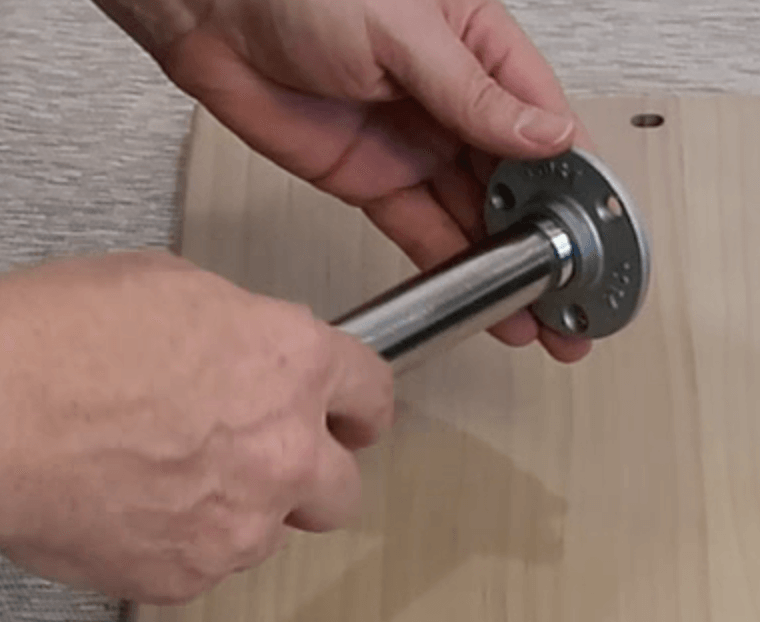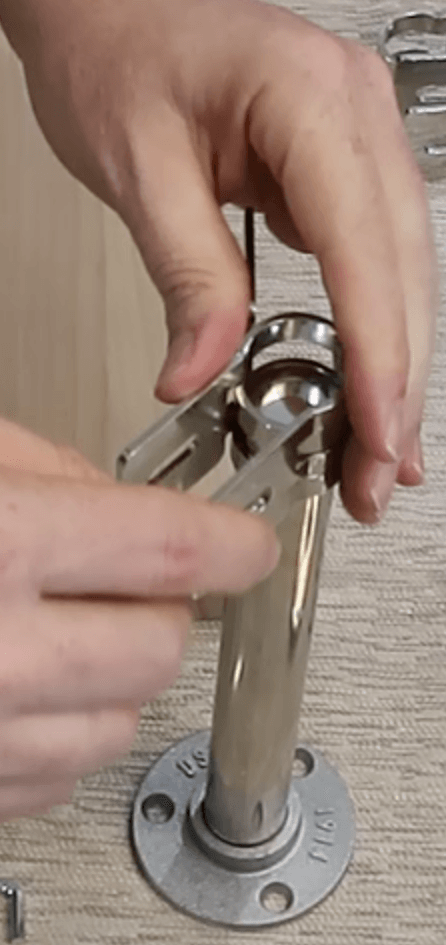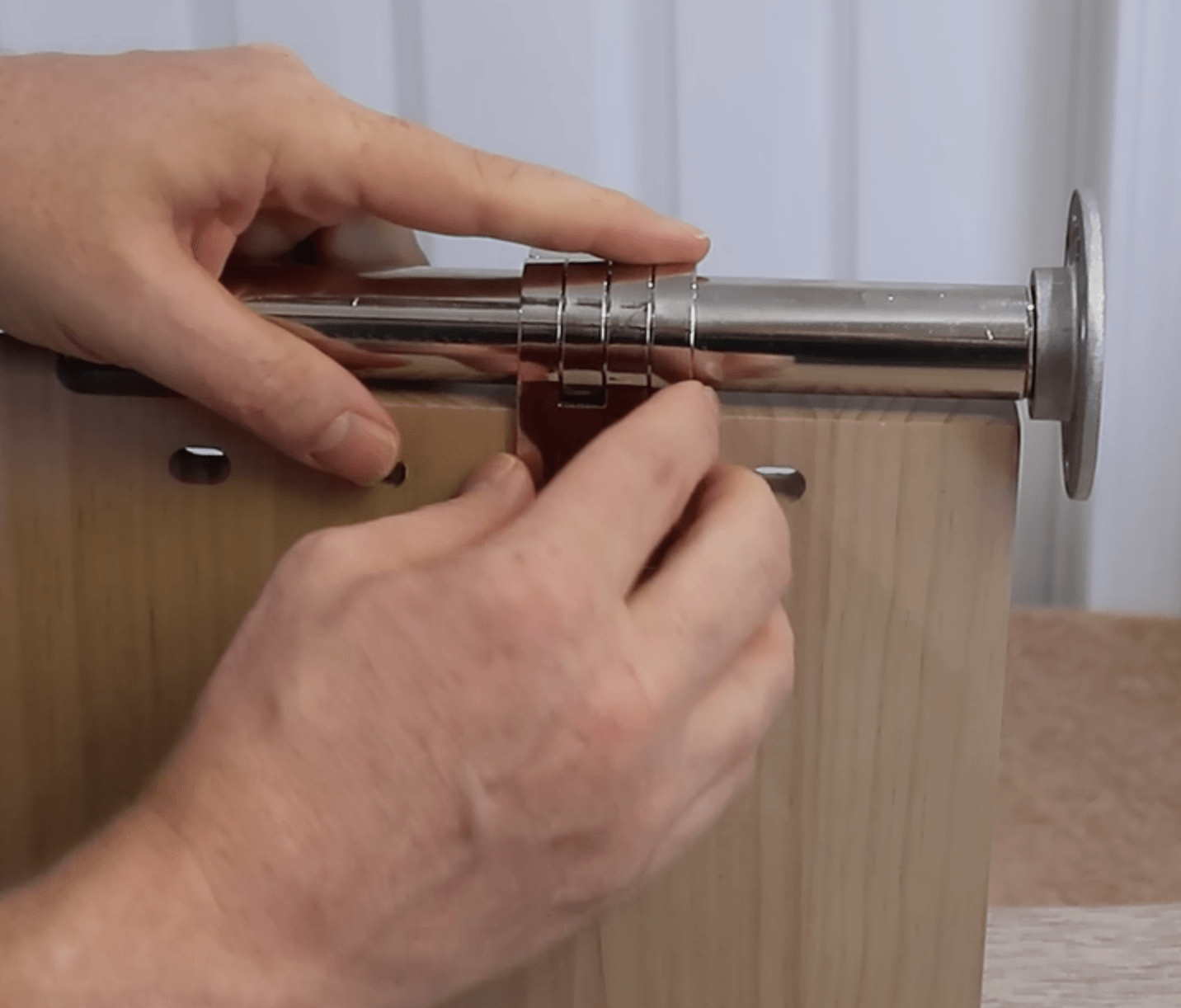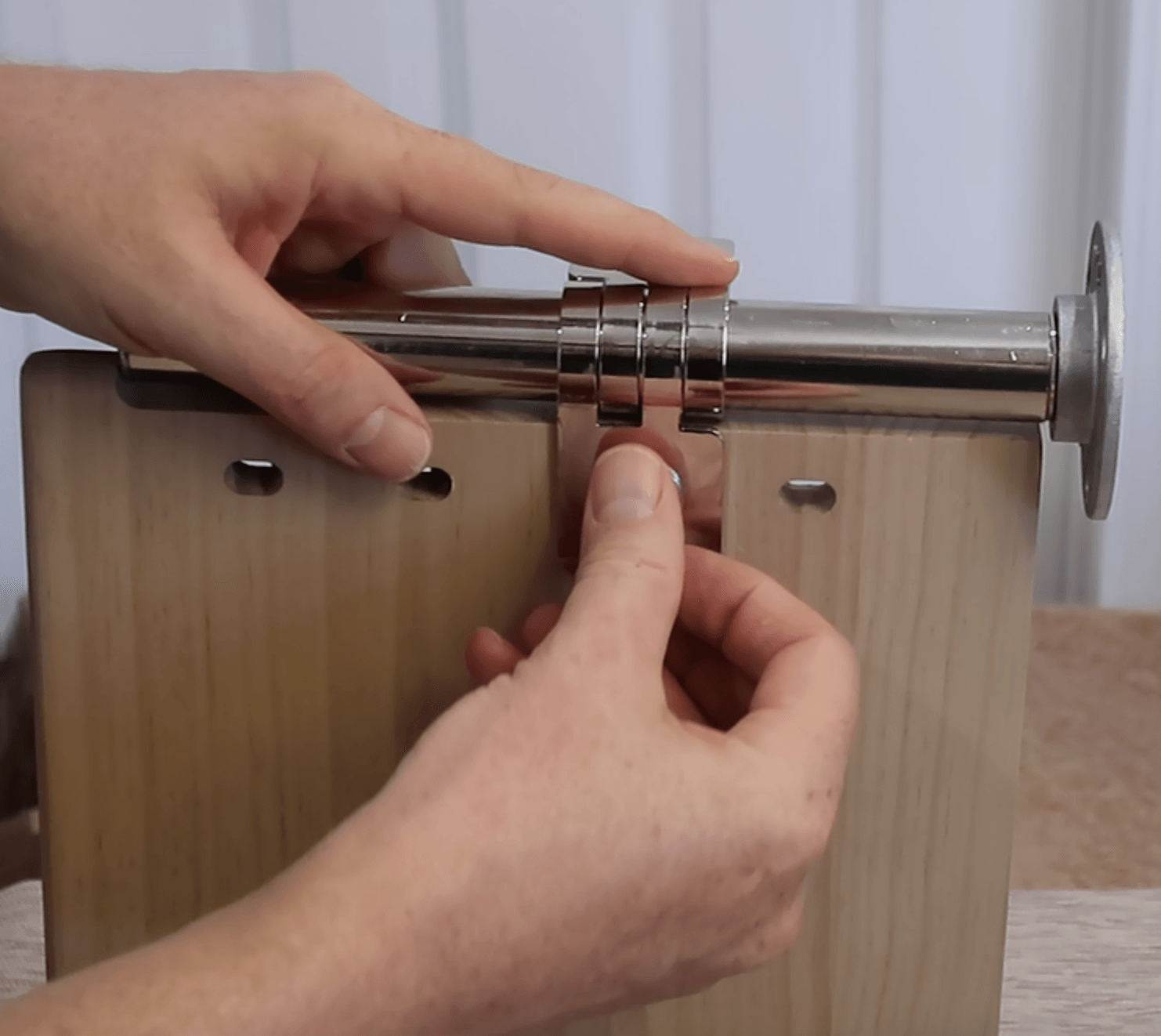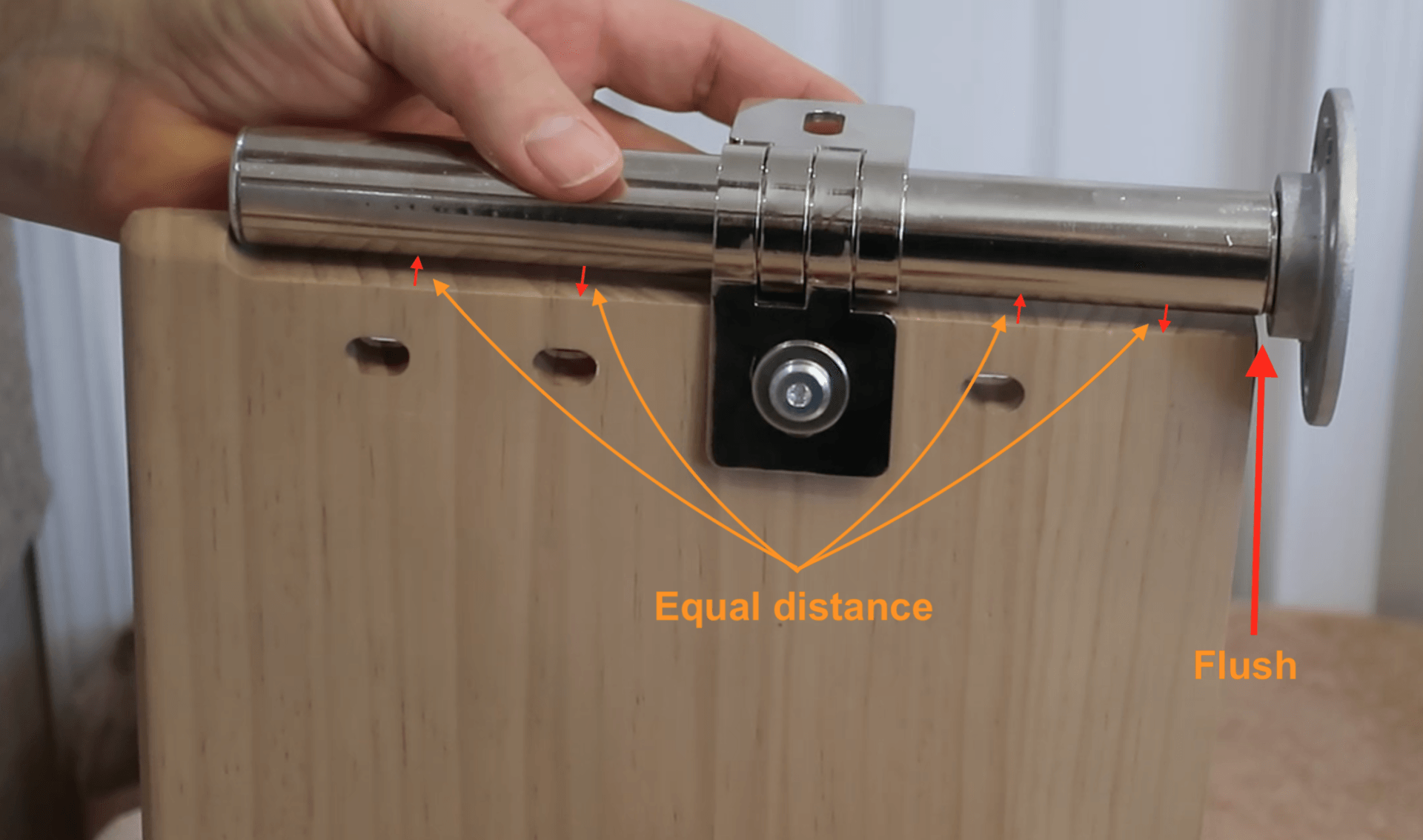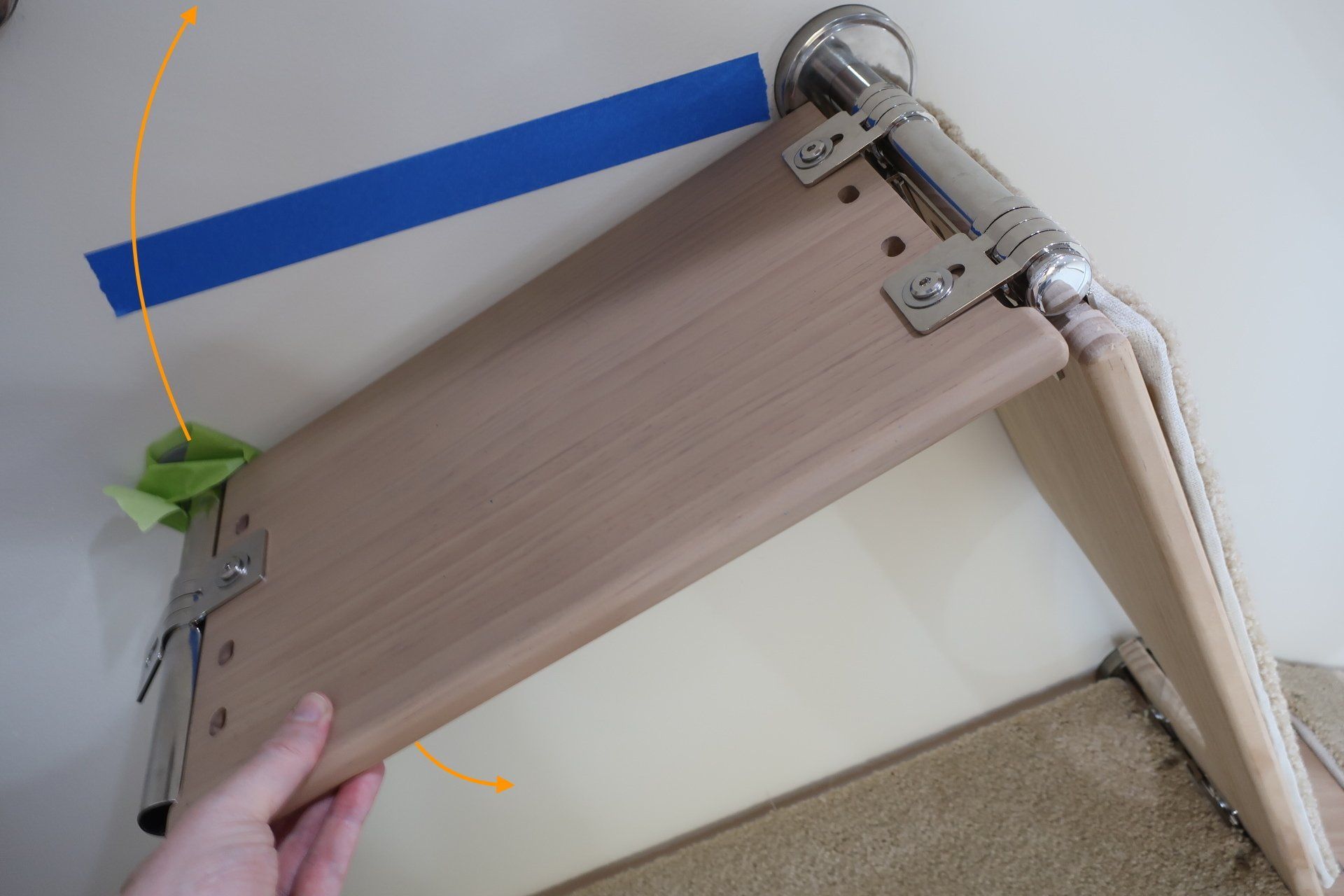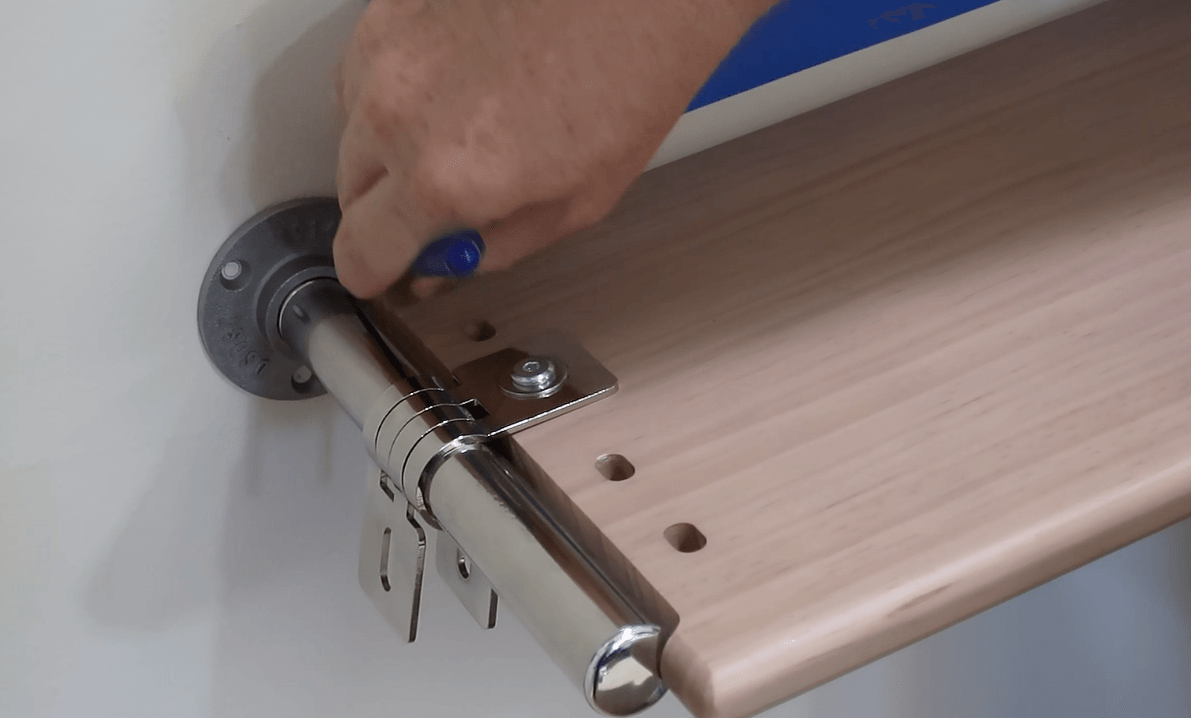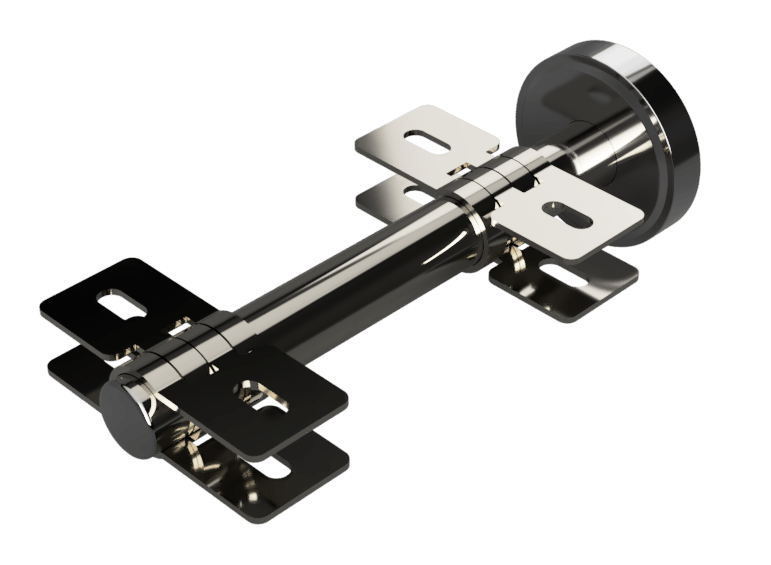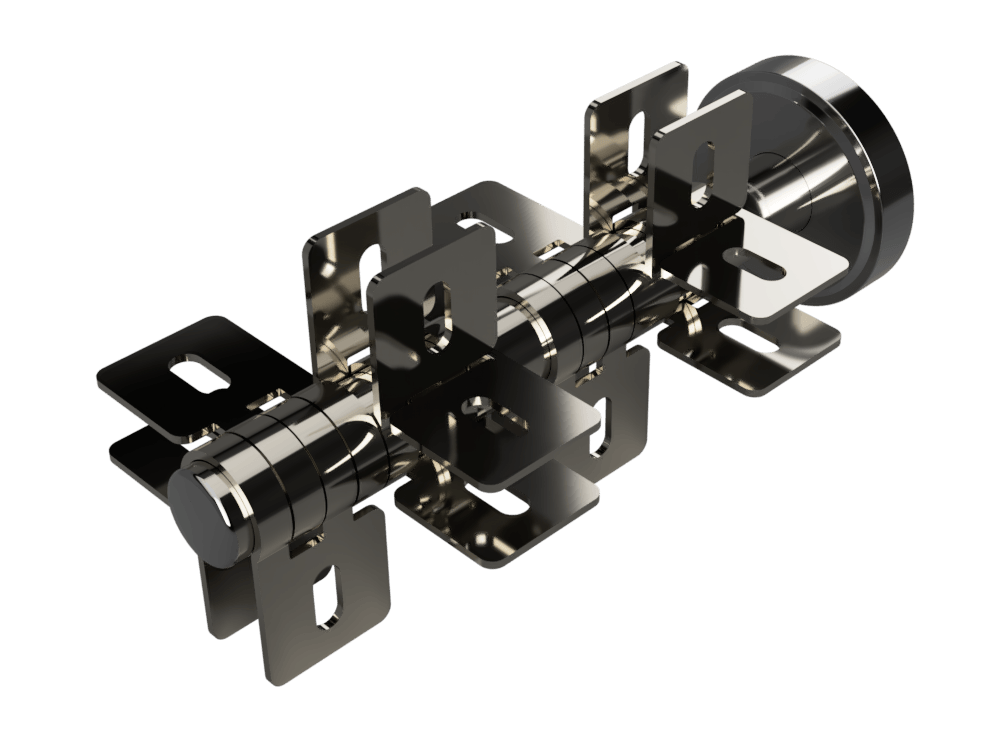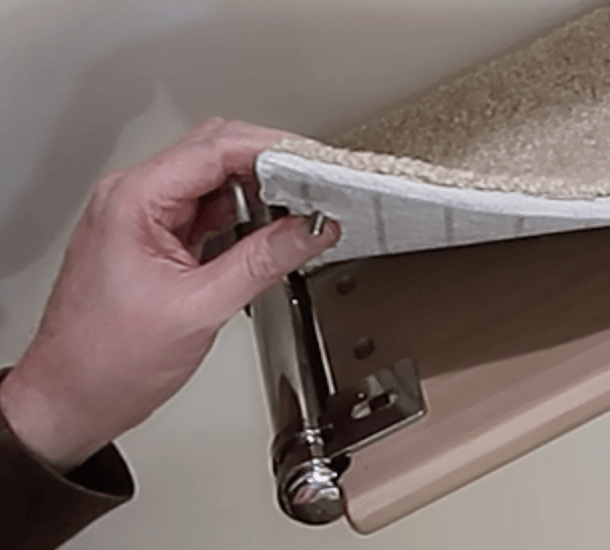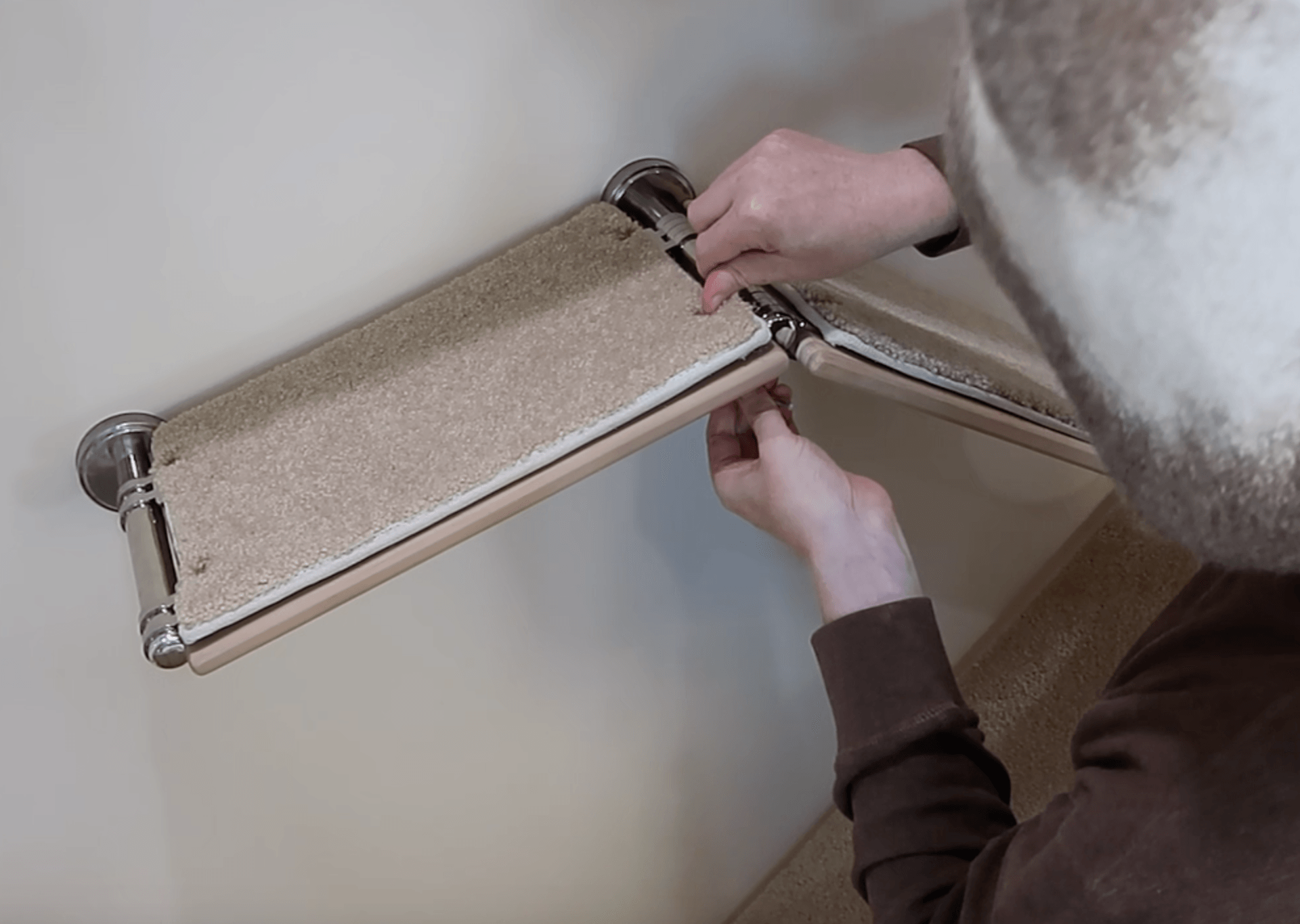Installation Instructions
Important Technical Notes
The shelf lengths (12", 16", 20", 26", 32", and 36") all refer to the distance from the center of the bracket to the center of the next bracket.
Step 17:
Attaching the carpet
Note that the carpet pads are not symmetrical. There is a wall-side and a room-side. The carpet should cover the entire flat surface of the top-side of the shelf without overhanging on either side.
There are three methods used for attaching the carpet to the shelves.
a. Slide the carpet under the U-clips. (Shown below)
b. Insert the bolts through the carpet pad., and then slide the washer between the carpet and the U-clip. (Shown to the right)

c. Place the wood-insert screw through the finishing ring and carpet. Then fasten to the shelf using the wood inserts. (Not shown)

b. Insert the bolts through the carpet pad., and then slide the washer between the carpet and the U-clip. (Shown to the right)
c. Place the wood-insert screw through the finishing ring and carpet. Then fasten to the shelf using the wood inserts. (Not shown)
Newsletter Sign-up
Thank you for signing up for the CatScapes Mewsletter. Please check your SPAM folder if you do not receive our newseltters and always feel free to contact us for assistance.
Oops, there was an error signing up. Please contact CatScapes so we can assist you!
Newsletter Sign-up
Thank you for signing up for the CatScapes Mewsletter. Please check your SPAM folder if you do not receive our newseltters and always feel free to contact us for assistance.
Oops, there was an error signing up. Please contact CatScapes so we can assist you!
